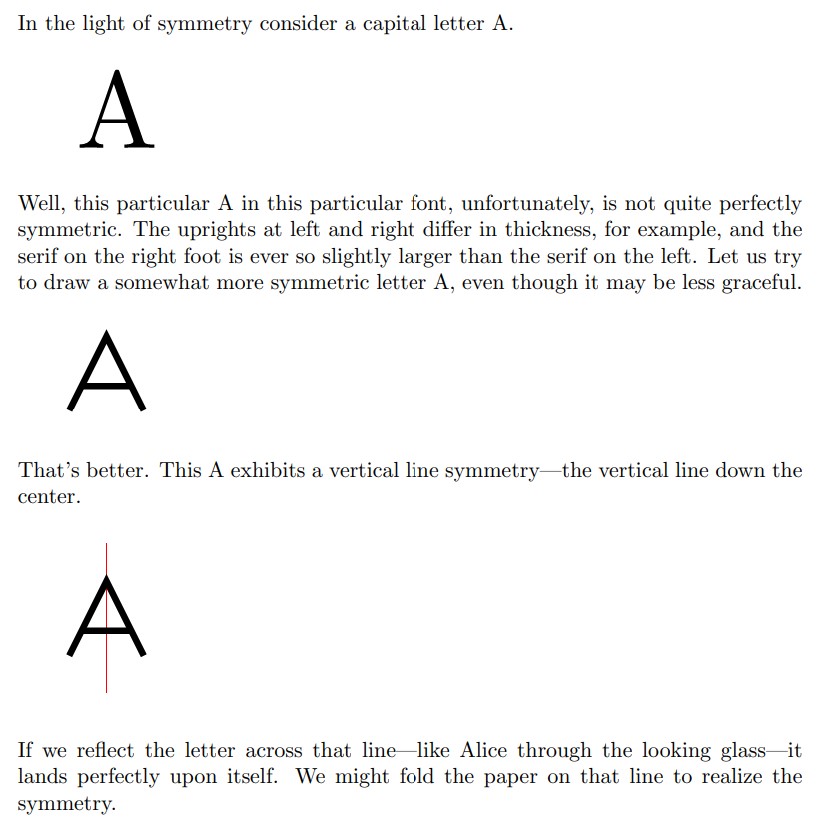A playful account of symmetry, contributed as a chapter to a larger work, The Language of Symmetry, edited by Benedict Rattigan, Denis Noble, and Afiq Hatta, a collection of essays on symmetry that were also the basis of an event at the British Museum, The Language of Symmetry.
[bibtex key=”Hamkins2023:Self-similar-self-similarity”]
Pre-order the book at: https://www.routledge.com/The-Language-of-Symmetry/Rattigan-Noble-Hatta/p/book/9781032303949
My essay is available here:
Abstract. Let me tell a mathematician’s tale about symmetry. We begin with playful curiosity about a concrete elementary case—the symmetries of the letters of the alphabet, for instance. Seeking the essence of symmetry, however, we are pushed toward abstraction, to other shapes and higher dimensions. Beyond the geometric figures, we consider the symmetries of an arbitrary mathematical structure—why not the symmetries of the symmetries? And then, of course, we shall have the symmetries of the symmetries of the symmetries, and so on, iterating transfinitely. Amazingly, this process culminates in a sublime self-similar group of symmetries that is its own symmetry group, a self-similar self-similarity.

Download my essay for more…or order the book for the complete set!



